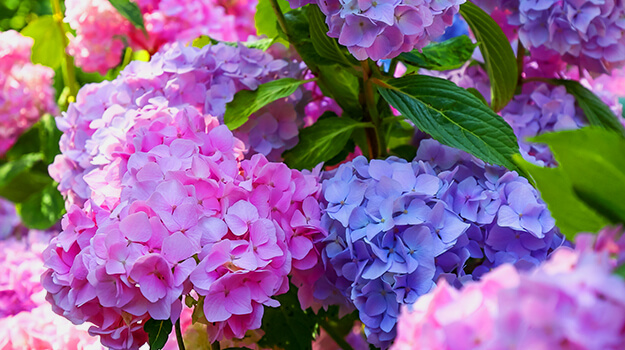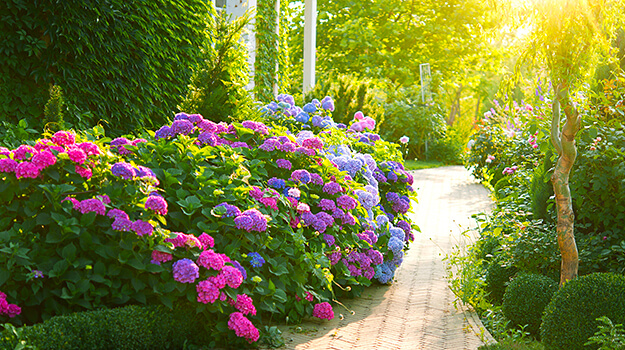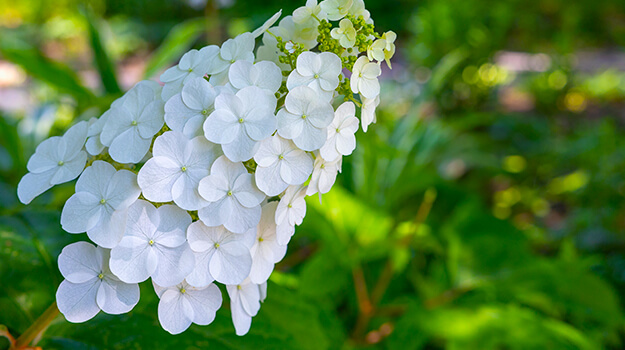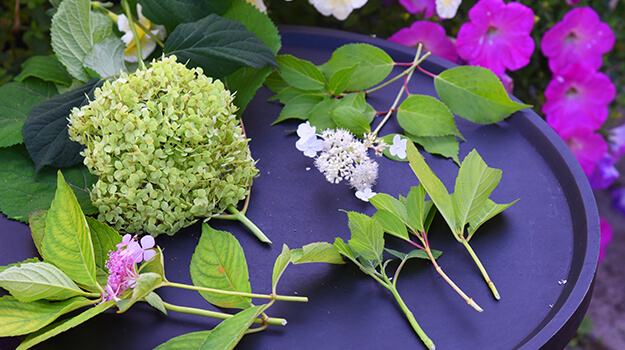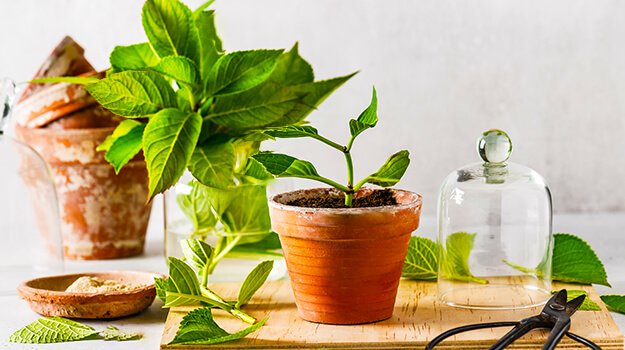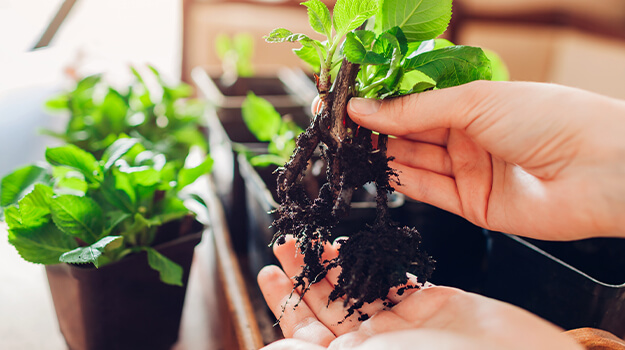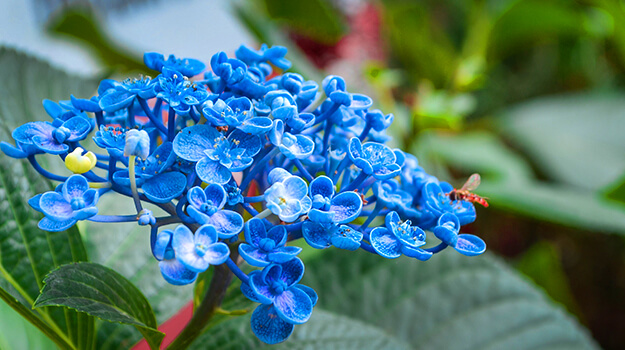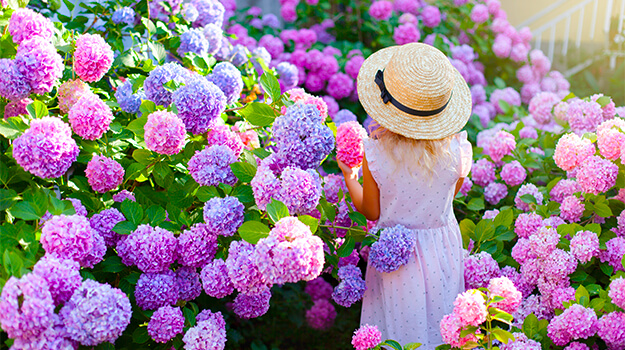Hydrangeas are among the most popular flowering shrubs. With more than 70 shrub species, grafted onto stems or climbing, hybridizers now offer us varieties that flower longer, tolerate the cold better or whose flowers are larger or more brightly coloured.
It's easy to be tempted by the wide selection available at garden centres. But what to do when you fall for a friend's hydrangea and can't identify it?
Only one solution remains: taking cuttings.
Can I propagate a hydrangea from a branch?
Unlike other woody plants that take a long time to form roots and grow, hydrangeas grow quickly and can reach maturity in a single year and bloom the following year. In a relatively short time, you can transform your garden with these spectacular flowering shrubs, which come in shades of pink, red, purple, blue-violet, lime green, and white.
Read our article to learn more about the various hydrangea cultivars: How to care for hydrangea
GOOD TO KNOW: Propagating patented plant varieties (the plant name is followed by the symbol "TM" or "®" on the label) is a violation of the law. However, prosecutions rarely affect individuals who experiment in their gardens without intending to engage in commercial activity.
What is the best time to propagate plants from cuttings?
Most gardeners prefer to take cuttings in the spring. The plant is actively growing, allowing the cuttings to quickly gain strength. These cuttings have all summer to establish roots, and planting them outdoors in the fall offers a better success rate. If you attempt the process in late summer or fall, the cuttings will need to be kept indoors over the winter.
Take your cuttings early in the morning or in the evening, when the weather is cooler. This prevents the stem you just removed from the mother plant from suffering an additional thermal shock.
Which hydrangeas can be propagated from cuttings?
The major hydrangea families differ not only in the shape and colour of their leaves and flowers, but also in the way they are grown. Even if you don't know the exact name of the cultivar you want to reproduce, knowing the family it belongs to will help you understand how to care for it.
How to propagate hydrangea macrophylla
This is the hydrangea sold in pots at Easter. Commonly called "bigleaf hydrangea," hydrangea macrophylla offers rounded pink, blue or white blooms. Not very hardy in northern regions (zones 5 to 11), it can reach 1.80 m to 3 m in milder climates. However, it does not tolerate drought or heat well.
If you want to grow it indoors (in a cool room!), cuttings can be taken in the fall.
How to propagate hydrangea arborescens
Its most famous cultivar is the Annabelle hydrangea which was once found in every garden, but newer varieties have some very interesting characteristics. Growing from 90 cm to 1.50 m tall, it is hardy (zones 3 to 9) and requires almost no maintenance.
Although it can be propagated from a stem, it is most often multiplied by division or root cuttings.
How to propagate hydrangea quercifolia
The oakleaf hydrangea dazzles in every season with its jagged leaves, which look a lot like those of an oak. It turns a beautiful red, purple or orange in the fall. Hardy in zones 5 to 9, it grows to a height of 2.4 m and bears pyramidal white panicles that also turn purple late in the season.
It is recommended to take cuttings from flowerless stems in early spring.
How to propagate hydrangea paniculata
Hydrangea paniculata grows 2.4 m to 4.5 m tall. Hardy in zones 3 to 8, it produces white to pink flowers. Cuttings are also taken in the spring to give them time to root before being planted in the garden in the fall.
How to take hydrangea cuttings?
You’ll need:
- Sharp, disinfected pruning shears
- STIM-ROOT Rooting Powder
- Pots (they don't need to be very wide, but they should be relatively deep!)
- PRO-MIX Organic Seed Starting Mix
How to propagate from a branch
- Choose a branch about 30 cm long and about the thickness of a pencil from a mature hydrangea. It should be without flower buds, healthy and green (avoid older stems which are woody).
- Using pruning shears, cut 5 cm below a leaf node (the swelling from which the leaves develop).
- Remove the leaves, except for the four at the top. Be careful not to damage the stem.
- Use disinfected scissors to cut off half of each saved leaf. This will allow your future plant to focus its energy on the production of roots.
- Fill deep pots with moist (but not soggy) PRO-MIX Organic Seed Starting Mix. Several cuttings can be planted in a large pot.
- Dip the bottom of the stem in STIM-ROOT Rooting Powder for a greater success rate.
- Make deep holes in the potting soil, then gently insert your cuttings. Plant deeply, burying at least 3 leaf nodes. Add more potting soil as needed.
- Water and, ideally, loosely cover your cuttings with a clear plastic bag for 1 or 2 weeks.
- Store your cuttings in a bright room (but away from direct sunlight), protected from frost.
The soil should remain moist, but never soggy. Water as soon as it begins to feel dry to the touch.
It will take about a month for your cuttings to form roots. You can check this by gently pulling on the stem. The slightest resistance will confirm that the operation is a success. When new leaves appear, your new plants can be transplanted into individual pots.
Wait as long as possible before planting your new plants in the garden, respecting the recommended spacing (between 1.20 m and 1.80 m depending on the variety). Continue to water every week.
Hydrangeas planted in the fall should bloom the following year.
TIP: You like to experiment? This propagation technique can be applied to many shrubs. Give it a try!
How to keep a hydrangea blue?
By controlling the soil pH with the addition of different amendments, you can achieve different flower colours in bigleaf hydrangeas. In acidic soil, hydrangea macrophylla will produce blue flowers, while in alkaline soil they will be pink.

